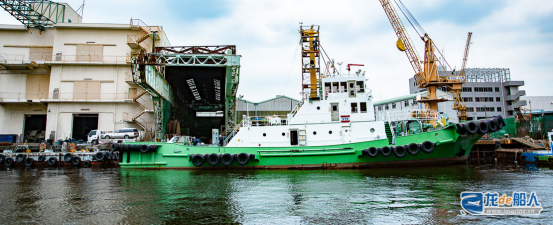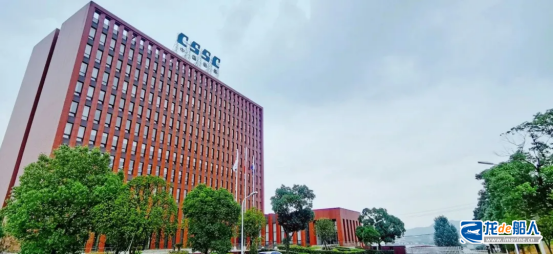In order to further seize the new shipbuilding market, the three major shipbuilding powers – China, South Korea and Japan – have launched a wave of shipyard mergers since the beginning of this year.
NYK Restructures Its Shipbuilding Subsidiaries
On September 25, Nippon Yusen Kabushiki Kaisha (NYK) announced it will merge two of its shipbuilding-related subsidiaries—Keihin Dock Co., Ltd. and Yokohama Machinery Co., Ltd.

Keihin Dock is NYK’s sole shipbuilding subsidiary, while Yokohama Machinery is a supplier of marine equipment and related products. By merging the two companies, NYK aims to strengthen their combined technical and sales capabilities and enhance its overall sales strength. Following the merger, NYK will continue to focus internally on engineering operations for ships, marine and industrial machinery, equipment, and components.
Effective October 1, Yokohama Machinery will be merged into Keihin Dock, which will continue operations as the surviving entity. Keihin Dock’s newly established Yokohama Machinery Division will assume the original functions of Yokohama Machinery.
NYK stated that this business integration is one of the strategic initiatives under the group’s mid-term management plan “Green Navigation · Driving Change 2026.” By deepening core operations and investing in emerging fields, the company aims to develop new technologies and services to achieve commercial growth in its shipping business.
Founded in 1968, Keihin Dock primarily engages in shipbuilding and repair, as well as the manufacturing and sales of environmental protection equipment. Established in 1978, Yokohama Machinery specializes in the sales of marine machinery, industrial machinery, and components. It serves as an authorized marine equipment agent for IHI Power Systems.
Japan’s Shipbuilding Industry Accelerates Consolidation to Counter China and South Korea
To boost its market share, which has been squeezed into single digits by Chinese and South Korean shipyards, Japan’s shipbuilding industry is accelerating efforts to enhance its competitiveness.
In June this year, Imabari Shipbuilding, Japan’s largest shipbuilding group, announced it would increase its stake in Japan Marine United (JMU), the nation’s second-largest shipbuilder, to 60%. As a result, JMU will become a subsidiary of Imabari Shipbuilding.
Japan views this share increase as a turning point for the revival of its shipbuilding industry. Upon completion, the combined annual shipbuilding capacity of Imabari Shipbuilding and JMU is projected to reach 5 million gross tons (GT), aiming to secure production capacity comparable to that of HD Hyundai Heavy Industries or Samsung Heavy Industries.
Additionally, Japan’s Tsuneishi Shipbuilding has acquired Mitsui E&S Shipbuilding, a subsidiary of Mitsui E&S Holdings, and renamed it Tsuneishi Solutions Tokyo Bay. Tsuneishi Shipbuilding completed the acquisition of Mitsui E&S Shipbuilding’s shares in three phases. Previously a subsidiary of Mitsui E&S Holdings, Mitsui E&S Shipbuilding primarily handled ship design and construction operations. Facing consecutive annual losses due to competition with Chinese and South Korean shipbuilders, Mitsui E&S Holdings was compelled to announce the termination of its shipyard’s shipbuilding operations and proceed with its sale.
Merger Wave Sweeps Through Major Chinese and Korean Shipbuilders

Beyond Japan, China and South Korea—the two major shipbuilding nations—are also driving industry consolidation to pool resources and enhance shipbuilding efficiency.
On September 16, China State Shipbuilding Corporation Limited (hereinafter referred to as “CSSC”) officially listed 3.053 billion newly issued shares on the Shanghai Stock Exchange, marking the formal conclusion of CSSC’s absorption merger of China Shipbuilding Industry Company limited (CSIC).
Previously reported, CSSC announced in September 2024 that it was planning a share-swap merger with CSIC, whereby CSSC would issue A-shares to all CSIC shareholders. On July 4, 2025, the Shanghai Stock Exchange approved the merger of CSIC.
According to the semi-annual data released by CSSC and CSIC at the end of August, as of June 30, 2025, CSSC had accumulated orders for 333 merchant vessels totaling 26.4911 million deadweight tons and valued at RMB 233.487 billion. CSIC held orders for 229 vessels totaling 34.9392 million deadweight tons. This indicates that the combined CSSC holds over 560 vessels in its order backlog.
With the formal conclusion of the merger between CSSC and CSIC, CSSC’s asset scale will surpass RMB 400 billion, propelling it to become the world’s largest and most comprehensive publicly listed shipbuilding enterprise.
To consolidate its shipbuilding resources, expand into the defense market, and align with President Trump’s “Make American Shipbuilding Great Again” initiative, South Korea’s largest shipbuilding conglomerate, HD Hyundai, has followed suit by announcing the merger of its two major shipbuilding subsidiaries—HD Hyundai Heavy Industries and HD Hyundai Mipo Dockyard. This marks the first major restructuring since the establishment of HD Korea Shipbuilding & Offshore Engineering (HD KSOE), the intermediate holding company for its shipbuilding operations, in 2019.
HD Hyundai Heavy Industries and HD Hyundai Mipo, as Korea’s leading shipbuilders, rank first and fifteenth globally respectively based on their order backlogs. The merger is scheduled for completion in December 2025, with HD Hyundai Mipo being integrated into HD Hyundai Heavy Industries.
As the world’s three major shipbuilding powers successively advance industry consolidation, competition for orders in the global new shipbuilding market is expected to intensify.


